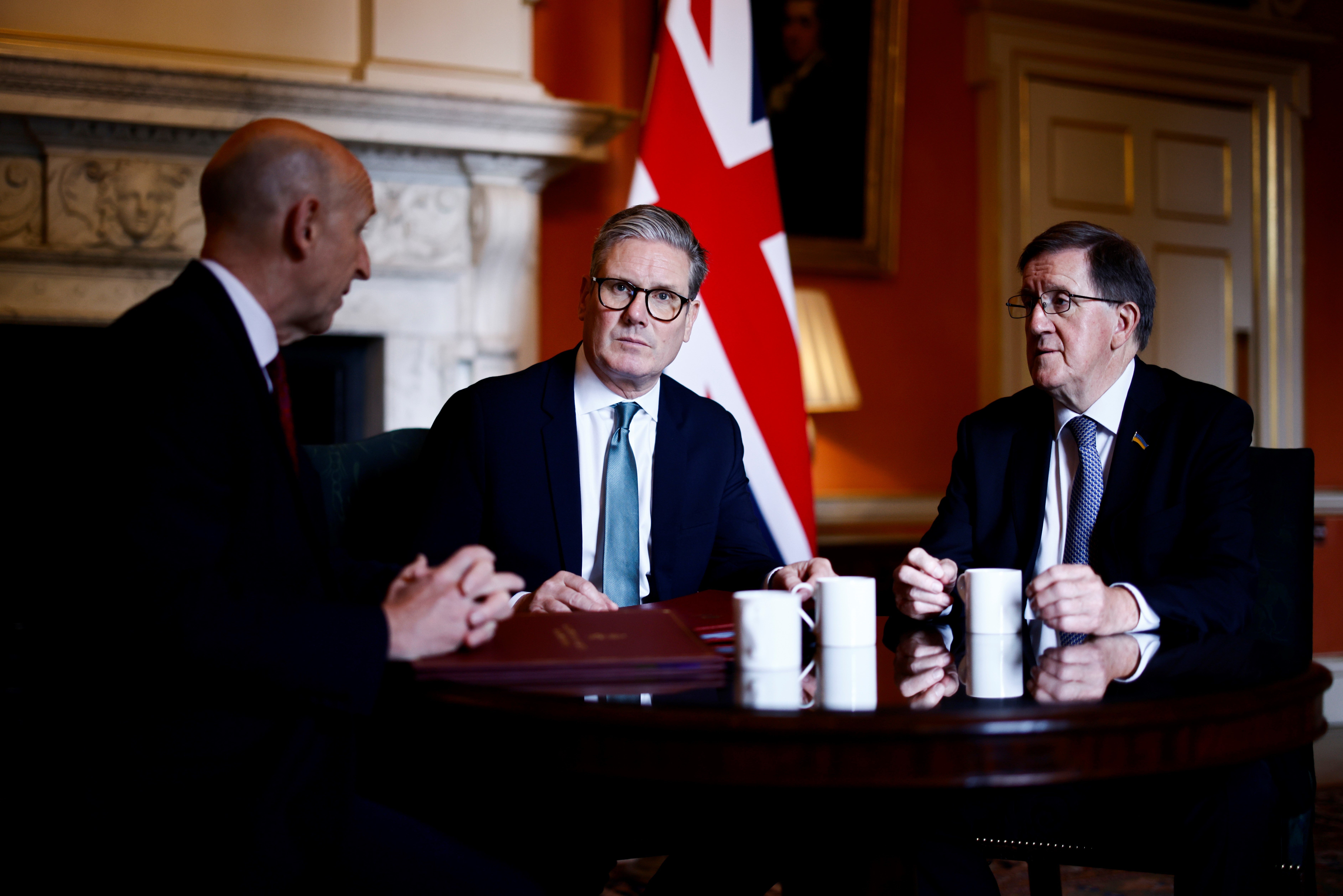ARTICLE AD BOX
Keir Starmer's bold defence plans have been overshadowed by a row over money as he was warned Britain may not be moving quickly enough to counter the rapidly growing threats from Russia.
The prime minister vowed to make Britain "a battle-ready, armour-clad nation” as he unveiled his strategic defence review (SDR) at the Govan shipbuilding yard in Scotland, which included a “more lethal” Army boosted to 100,000 personnel, 12 new submarines, drones and a rollout of Artificial Intelligence.
But questions were raised over Sir Keir’s big ambitions to make Britain “safer and stronger” after he refused to commit to spending 3 per cent of Britain’s gross domestic product on defence by 2034 — which the review warned was essential to ensure the plans were affordable.
With a backdrop of “turbulent times” and a promise to learn lessons from the Ukraine conflict, the report even warned “it may be necessary to go faster” on increasing the UK’s defence capabilities. They noted: “Russia is already menacing our skies and our waters, and threatening cyber-attacks, so this is a real threat we’re dealing with.”

The long-awaited 130-page SDR, put together for the government by a team headed by Labour peer and former Nato chief Lord George Robertson, made 62 eye-catching recommendations, including:
- Making the Armed Forces “ten times more lethal” while increasing the size from 80,000 to 100,000 personnel
- Building up to 12 attack submarines for the Royal Navy as part of the Australia-UK-US Aukus
- Procuring up to 7,000 long-range weapons built in the UK and opening of at least six new munitions factories
- Using more AI and technology, including creating a team of cyber and tech experts to be deployed alongside military personnel
- Teaching school children more about the army as parts of moves to reconnect the armed forces and wider society
Unveiling the details of the review, Sir Keir said he was "100% confident" the plans to make Britain “ready for war” could be delivered on current funding plans.
The government has promised to increase defence spending to 2.5 per cent of GDP by 2027, and has an “ambition” – but no firm commitment – to hike it to 3 per cent in the next parliament.
But the document’s authors warned the recommendations would be unaffordable unless Sir Keir stuck to the “vital” commitment to raise the funding.
It said: “The government’s important decision to raise defence spending to 2.5 per cent of GDP by 2027/28 and, vitally, to 3 per cent in the next Parliament made an enormous difference. The decision established the affordability of our recommendations across a 10-year programme.”

Paul Johnson, the director of the Institute for Fiscal Studies (IFS), also warned that the only way to pay for the increased defence budget would be through “chunky tax rises” as the government grapples with other key areas of public spending.
He told Times Radio: "It looks like the government wants to reinstate the winter fuel payment. It's thinking about the two-child limit for benefits. We've got a spending review next week. And if we're really going to spend another £10 to15 billion a year on defence, whilst inevitably we're going to spend more and more on health and pensions and so on, you really do have to ask that question, what are the choices that you're going to make?
“Bluntly, it really does seem to me that the only choice that is available, if we're going to go through all of those things, is some really quite chunky tax increases to pay for it."
A Tory source added: “Before it has already been released, their recommendations will now be ’unaffordable’ without the firm commitment for 3% of spending by the next parliament.”
Launching the review in the shadow of Type 26 frigates being built in BAE Systems' shipyard in Govan, Glasgow, Sir Keir said three “fundamental changes" would be made to the UK's defence.
He said the UK was moving to “war-fighting readiness”, adding: "When we are being directly threatened by states with advanced military forces, the most effective way to deter them is to be ready, and frankly, to show them that we're ready to deliver peace through strength."
The second change is that the government will adopt a "Nato-first" stance towards defence so that everything it does adds to the strength of the alliance.
Sir Keir added: "Third, we will innovate and accelerate innovation at a wartime pace, so we can meet the threats of today and of tomorrow, as the fastest innovator in Nato."
The report also recommends more lessons about the army in schools, as well as an attempt to boost the army cadets numbers by 30 per cent to 250,000. The report calls on the MOD to work with the Department for Education to “develop understanding of the Armed Forces among young people in schools,” as part of moves to improve relations with wider society.
Along with more submarines, there will also be more F35 fighters.
It is hoped that investments in more equipment such as 12 new Astute submarines will drive economic growth with jobs across the UK in places like Glasgow and Derby.

A new Defence Readiness Bill is to be put before Parliament giving ministers powers to “respond effectively” in a crisis.
Sir Keir also flagged up his aim to create a hybrid Royal Navy with greater use of AI, as well as creating a new Digital Warfighter Group with “appropriate recruitment and pay freedoms”.
At least ten per cent of the MOD equipment procurement budget should be spent on new technologies every year, the report noted, with an added recommendation that barriers for collaboration with industry partners should be removed.
Savings will be made by cutting the cost of the civil service defence workforce by 10 per cent.
This will include a switch from back office to front office by automating 20 per cent of HR, finance and commercial functions by summer 2028 “as a minimum first step”.









 English (US) ·
English (US) ·